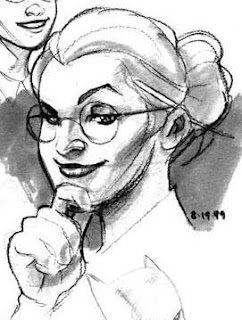 Most towns of decent size have a museum of some sort. If you don't live in a town that does, then you probably relatively close to one that does. So, don't tell me that you can't visit a museum. I don't care if it's not the kind of museum you're interested in. Go to it. Bring your sketchbook. Sit down in front of something--anything--and draw it.
Most towns of decent size have a museum of some sort. If you don't live in a town that does, then you probably relatively close to one that does. So, don't tell me that you can't visit a museum. I don't care if it's not the kind of museum you're interested in. Go to it. Bring your sketchbook. Sit down in front of something--anything--and draw it.Across the ages, artists have always frequented museums and art galleries to pull influence from other artists. When I was in the Louvre, sitting down for a few hours and drawing a statue made me feel a part of the greater collective of artists over time. No matter what your medium, style, or skill level, every artist is the same when they set up their sketchbook in front of a museum exhibit: they become a student.
I went to the Ella Sharp Museum out in Jackson, MI. The initial pull was the comic art exhibit, but I was also interested in its exhibit on women's fashion of the Civil War era, and its permanent collection of local historical items. I took tons of pictures of everything, of course (you never know when I'll need to draw a woman from 1860, a WWI officer's uniform, or a surveyor's compass!). But I decided to sketch a few things in its permanent collection. A good learning experience.


















